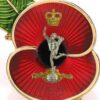Ambush timing
Home › Forums › Historical › Bolt Action › Ambush timing
- This topic has 12 replies, 6 voices, and was last updated 4 years, 2 months ago by
 Steeljackal.
Steeljackal.
-
AuthorPosts
-
November 3, 2020 at 9:21 am #182752
 SteveTParticipant
SteveTParticipantGroup of infantry crosses the street. Artillery with HE lying in wait.
Infantry I assume are moved one at a time.
At what point does the Artillery fire? When it wants? And how about placing the HE template.
November 3, 2020 at 9:41 am #182756Master Chief
ParticipantBolt Action 2nd Ed page 59:
Resolving Ambush Fire: Units that are in Ambush can interrupt any move made by any enemy unit to shoot at it. The ambushers can interrupt at any point during the move, as long as they can see the
target at that point: before, during or as soon as movement is complete. The player whose units are in Ambush declares when he wants his troops to open fire, and the target unit is positioned accordingly. The ambushing player flips the unit’s Ambush order to Fire and resolves the shooting as normal – except that the target can never react to Ambush fire. If the target is not destroyed as a result, then the unit completes its move with whatever troops remain.I think this arose because it was assumed if the ambush was declared when the player has moved only one model, then the HE only hits 1 model. My interpretation is this is not the case. When the player moves a single soldier model of an infantry unit and an ambush is declared midway, the model should be stopped where it is, and the rest of its unit moved up to where he is, because in “reality” the entire infantry unit is moving together as a whole. Hence the phrase “and the target unit is positioned accordingly” was used in the Ambush rules. Once the rest of its unit “catches up”, the HE template is put over the entire unit and resolved accordingly.
November 3, 2020 at 1:58 pm #182757 SteeljackalParticipant
SteeljackalParticipantIt is not so simple. How I put models together during ambush? Before starting to move they where maybe grouped close, at the end of movement they are grouped close, and during movement? I put them in a row and far away only because the ambush has already been declared and therefore I already know that enemy will fire an HE at them?
November 3, 2020 at 2:11 pm #182758Master Chief
ParticipantBolt Action 2nd Ed page 45:
An advancing infantry unit can move up to its basic move rate. This is usually 6” in any direction. Simply move each model up to a maximum of 6”. Remember that a unit must maintain a formation, so once the whole unit has moved no model can be separated from the formation by more than 1”.
The rule above and the individual models’ starting positions will determine how the remaining models join the first model. This also applies if the unit was running, in this case replace 6″ with 12″.
I would think as long as the above rules are met you can determine how to position the models in the unit, even though at the point of the ambush the unit has not moved its full 6″ or 12″ yet.
November 3, 2020 at 10:59 pm #182771Stuart Harrison
ParticipantSimple principle – if you are interrupted by an ambush say 4 inches into a 6 inch advance move, you move each of the remaining models up to 4 inches so the unit is in a coherent formation, resolve the shot, then complete the move with only the remaining 2 inches of movement for each model. If you string your unit out by only moving some models an inch or two before resolving the shot, those models are going to be an anchor on the rest of the squad with only a couple of inches movement after the shot.
November 3, 2020 at 11:30 pm #182772 SteveTParticipant
SteveTParticipantYes, but lets say a more devious opponent can then string out his men in a line to avoid the HE template doing as much damage, whereas they started in a clump and intended to end in a clump.
November 3, 2020 at 11:54 pm #182773Master Chief
ParticipantYes, but lets say a more devious opponent can then string out his men in a line to avoid the HE template doing as much damage, whereas they started in a clump and intended to end in a clump.
Assuming that happens and the entire unit survives the HE attack, it will have to continue its remaining move in a line, because each model will now be constrained by where it currently is, and have to measure the remaining distance from where it is. Thus it will also inevitably end its move in a line i.e. it will not be able to string out its models during the attack and end its move back in a clump.
An additional note is that should the target string out its models, I would place the HE template in the middle of the line, hopefully to kill off some models there and create a greater than 1″ gap within the line. This will further slow down the unit’s movement as the “leading” models will have to “slow down” for the “lagging” models to close the gap (Bolt Action 2nd Ed page 35 under Formation).
November 4, 2020 at 6:55 am #182774 SteveTParticipant
SteveTParticipantI see what you mean, but why would it have to end its move in a line? Perhaps the men at the back have more movement left and so they all end up in a blob across the road.
I think the rules really don’t cover this without a load of interpretation.
Odd I think, since this must be a common occurrence in people’s games?
November 4, 2020 at 8:39 am #182775 Kar98kParticipant
Kar98kParticipantAnother fair way to handle this situation is to have the ambushing player point out the spot where the attack will take place and let the moving player finish the unit’s move. If the attack hits, use the unit’s final position for the purpose of placing the template. When removing casualties, allow the player to switch positions of figures in the unit (but not move them).
If a template is not needed (no HE shots), than it really doesn’t matter.
-
This reply was modified 4 years, 2 months ago by
 Kar98k.
Kar98k.
November 4, 2020 at 9:21 am #182777 NatParticipant
NatParticipantKar98K’s way is the way we play it at the Chelmsford bunker… reasons
i) its quicker as you move all your models in one go before we work out shooting, rahter than half move, shooting, remove casualties, finish moving whilst remembering how far each individual guy can go
ii)unless exceptional damage is rolled the owning player removes casualties so its going to be tyhe same grunts who get hit no matter which way you do it
iii) it cuts down down on people playing the rules not the game… we play with a beer or two and a laught so are more intresting in a good time that win at all costs
Now if you did want to play it raw… then the moving player declears which unit and moves the lead model along the path that they take until the ambushing player goes “ambush”. THe moveing player then stops the lead model and moves each individual guy up along a similar path until they are in coherancy.
Ambushing player now declears which unit(s) are actaully ambushing and works out the firing step.
moving player takes a moral check and if possible continues moving the unit
Now if you do it this way if you the moving player string your unit out to much the ambush might only kill 1 person but itll slow the unit down / make more of the moving unit out of range than if you had clumped together and lost a couple of more people
November 4, 2020 at 9:37 am #182778Master Chief
ParticipantI see what you mean, but why would it have to end its move in a line? Perhaps the men at the back have more movement left and so they all end up in a blob across the road.
The first model to be moved should be the one furthest upfront. Assume it was stopped by an Ambush attack after moving 4 inches, all other models have to be moved 4 inches to join up with the first model. Hence the phrase “and the target unit is positioned accordingly” was used.
Regardless of how many inches (up to a maximum of 4 inches) the remaining models are moved, the entire unit should be deemed to have only 2 inches of movement left. The unit should be considered moving as one and not man-by-man, although you move it model by model during play.
Hence if the models were positioned in a line with 2 inches of movement left, a forward movement to the maximum 2 inches would result in a line. But you are right that the models may end up in a clump if some models moved less than 2 inches, or moved towards a center point with the models at the ends of the line moving in diagonally and not directly forward.
November 5, 2020 at 1:31 am #182796 Kar98kParticipant
Kar98kParticipant“iii) it cuts down on people playing the rules and not the game… we play with a beer or two and a laugh so are more interesting in a good time than win at all costs”
With or without the beer… this is how all tabletop miniature gaming should be played.
November 5, 2020 at 4:33 pm #182800 SteeljackalParticipant
SteeljackalParticipantAgain, it’s not that simple in my opinion.
The regulation says “… Simply move each model up to a maximum of 6 …” and in fact we can move models at different distances, passing a model in front behind or changing positions as we want, always respecting the maximum distance for each individual model.
During an ambush, one model may have traveled less distance than another, and it is not in the rules to “steal” a model’s walkable distance because it stops movement with an ambush.
Consequently, it becomes unmanageable to remember how many inches are left to go for each model after the ambush.Or you can have situations like the one in the attached image: if “I have” to make each model move the same distance at the moment of the ambush, they could be in overlapping positions.
Summing up in my opinion it is a problem to position the models during the ambush, because we should take into account how much distance each one has traveled and therefore how much they can travel after, and this is not sustainable.
Doing some simulations, I think that one solution is to move all the models the same distance during the ambush, and in the case of models that overlap just move them a little so that one model gains +/- 0.5 inch and one loses 0.5 inch, so that on average no distance has been gained or lost.
-
This reply was modified 4 years, 2 months ago by
 Steeljackal.
Steeljackal.
-
This reply was modified 4 years, 2 months ago by
 Steeljackal.
Steeljackal.
Attachments:
-
This reply was modified 4 years, 2 months ago by
-
AuthorPosts
- You must be logged in to reply to this topic.

